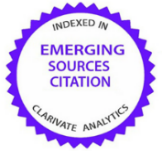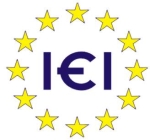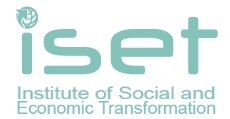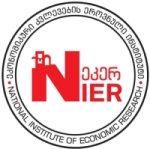Organizational-Economic Measures and Tools for the Multifunctional Use of Aquaculture Facilities in Ukraine
Abstract
Introduction. The world is aware of the importance of preserving natural resources and is shifting its focus to a social perspective, reflecting the acceptance of sustainable development principles. Aquaculture management must consider the impacts on the ecosystem and community, ensuring a balance in the use of water resources. Aquaculture can become a sustainable way to generate economic resources, and has recreational and cultural applications. This study examines the possibilities of using aquaculture in educational and cultural activities, public leisure, aesthetic education, and the development of park areas, as well as for other multifunctional purposes that contribute to improving water environment management and creating new ecological jobs.
Aim and tasks. The study aims to develop a conceptual vision of multifunctional aquaculture facilities as innovative and recreational centres for new jobs and the development of the local economy, considering socio-ecological and economic motivational mechanisms and effects that have not been previously investigated.
Results. The variability of directions for the development of aquaculture activities in the context of implementing marine strategies, Sustainable Development Goals, and reduction of the negative consequences of water pollution due to military actions. Socio-ecological and economic motivational mechanisms have been developed to form aquaculture facilities as centres of a green corridor or a concentration of ecologically safe zones to integrate them into urban and rural spaces. Measures for integrating aquaculture into tourism activities and the scientific concept of the concentration of ecologically safe territories with an aquaculture core in terms of organizational measures and possible effects are proposed.
Conclusions. A conceptual vision of multifunctional aquaculture facilities with the functions of reproduction, education and cultural-recreational enlightenment in terms of scientific and educational, decorative and circular facilities was proposed. The scientific concept of the concentration of ecologically safe territories with an aquaculture core in terms of organizational measures and possible effects was proposed.
Keywords:
aquaculture, innovations, multifunctional, recreational.References
Dobriak, D.S. Kanash, O.P., Babmindra, D.I., & Rozumnyi, I.A. (2009). Classification of agricultural lands as a scientific prerequisite for their ecologically safe use. Kyiv: Uroshai. https://dspace.organic-platform.org/xmlui/handle/data/452
European Commission. (2010). Council Directive Directive of 22.09.2010 no. 2010/63/EU on the protection of animals used for scientific purposes. Official Journal of the European Union. https://eur-lex.europa.eu
European MSP Platform. (2023). Aquaculture and tourism. maritime-spatial-planning.ec.europa.eu. https://maritime-spatial-planning.ec.europa.eu/sector-information/aquaculture-and-tourism
FAO. (2021). GFCM 2030 Strategy for sustainable fisheries and aquaculture in the Mediterranean and the Black Sea. https://doi.org/10.4060/cb7562en
FAO. (2023). Applying spatial planning for promoting future aquaculture growth. In: Seventh session of the Sub-Committee on Aquaculture (SCA) of the FAO Committee on Fisheries (COFI). https://www.fao.org/3/mk029e/mk029e.pdf
Fundación Biodiversidad. (2019). La Pesca Recreativa Continental en España. Madrid: Marco Jurídico y Caracterización Fundación Biodiversidad.
Government of Canada. (2023). Survey of Recreational Fishing in Canada. https://www.dfo-mpo.gc.ca/stats/rec/can/2015/index-eng.html
Government of South Australia. (2020). Management Plan for Recreational Fishing in South Australia. Adelaide SA 5001.
Diia.Business. (2023). Handbook for entrepreneurs. Sustainable Development Goals. https://business.diia.gov.ua/handbook/sustainable-development-goals/
ITSASNET. (2023). Los pepinos de mar podrían aliviar el impacto de la acuicultura. https://itsasnet.com/los-pepinos-de-mar-podrian-aliviar-el-impacto-de-la-acuicultura
Melikh, O. Irtyshcheva, I.O., Archybisova, D.S., Suslov, V.S. (2019). Tourism as a facilitator of aquaculture development in the Black Sea regions of Ukraine. Bulletin of Kharkiv Nation Agrarian University named after V.V.Dokuchayeva. Series “Economic Sciences,” 3, 164–172. https://doi.org/10.31359/2312-3427-2019-3-164
MSP Platform. (2023). Conflict Fiche 6: Aquaculture and maritime tourism. https://maritime-spatial-planning.ec.europa.eu/sites/default/files/sector/pdf/6_aquaculture_tourism.pdf
Office of Aquaculture. (2023). Frequent Questions – Marine Aquaculture and Recreational Fishing Interactions. https://www.fisheries.noaa.gov/national/aquaculture/frequent-questions-marine-aquaculture-and-recreational-fishing-interactions
Parlamento Europeo. (2022). Hacia una economía azul sostenible de la UE: papel de los sectores de la pesca y la acuicultura. https://www.europarl.europa.eu/doceo/document/TA-9-2022-0135_ES.html
Safran, P. (2002). Fisheries and aquaculture: towards sustainable aquatic living resources management. Knowledge for sustainable development: an insight into the Encyclopedia of life support systems (Vol. 2, pp. 1059–1074). Oxford: EOLSS Publishers.
The State Agency of Melioration and Fisheries of Ukraine. (2023). Report of letters regarding information received at the request of central and territorial authorities regarding the availability and use of aquaculture facilities. https://darghelp.com/en
Stelzenmüller, V., Schulze, T., Gimpel, A., Bartelings, H., Bello, E., Bergh, Øivind; Bolman, B…. Verner-Jeffreys, D.W. (2013). Guidance on a better integration of aquaculture, fisheries, and other activities in the coastal zone: from tools to practical examples. https://maritime-spatial-planning.ec.europa.eu/practices/guidance-better-integration-aquaculture-fisheries-and-other-activities-coastal-zone
Tiutiunnyk, H. & Kupinets, L. (2020). Concentration of ecologically safe agricultural lands: economic and organizational support. Odesa: IMPEER NAS of Ukraine. https://doi.org/10.31520/978-966-02-9298-7
Tiutiunnyk, H. (2021). Methodical aspects of the strategic management of investment and innovation activities in the field of ecologically safe land use. Economic Innovations, 23(3(80)), 329–341. https://doi.org/https://doi.org/10.31520/ei.2021.23.3(80).329-341
Vdovenko, N. (2014). Regulatory and Legal Support of Government Regulation of the Agricultural Sector. Mechanism of Economic Regulation, 4, 100-110.
Zapata, L. (2020). Colombia Azul: Acuicultura creciente y pesca sostenible. Medellín : AUNAP y WWF Colombia. https://wwflac.awsassets.panda.org
If the article is accepted for publication in the journal «Economics. Ecology. Socium» the author must sign an agreementon transfer of copyright. The agreement is sent to the postal (original) or e-mail address (scanned copy) of the journal editions.






















